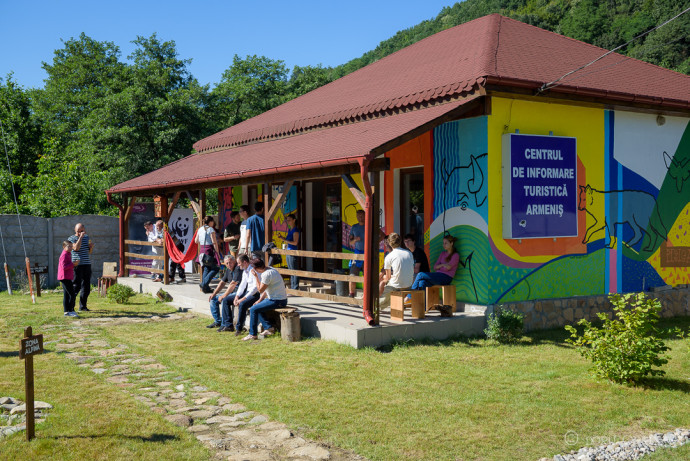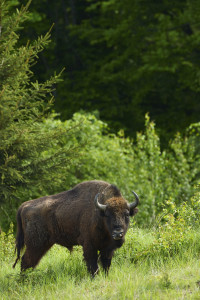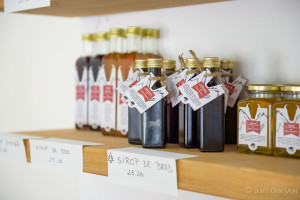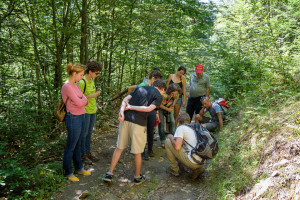The Bison Visitor Centre in Armeniș, Țarcu Mountains, Romania, is now presenting scientific data about the bison in a playful and immersive way. It has the biggest holographic projection in Europe with two more installations that were built at the crossroads between art and technology. The data feed, animating the installations, is being continuously collected from the field by trainees from Romania and abroad who study different relevant subjects related to natural sciences. They live and work in the nearby village of Feneș, at the Research Station which was inaugurated this August.

The Bison Visitor Centre and the Research Station launched this August have been built with a grant from the Swiss Contribution to the Extended European Union, under the project ”Bison Hillock innovation lab for wildlife”. Starting in autumn 2016, the data collected at the Research Station will also be transferred onto an online platform transforming science into a living story. People from around the world will have the possibility to follow bison’s activity and their impact in the Southern Carpathians rewilding area. With this new technology, the Bison Visitor Centre in Armeniș is put on the map of the most innovative tourist centres in Europe.

Rewilding Europe, WWF, the Bison Hillock Association Armeniș (AMZA) and Modulab studio are jointly taking nature conservation a step forward through various interdisciplinary projects including ”LIFE-Bison: Urgent actions for the recovery of European Bison populations in Romania” project, financed by the European Commission, through the LIFE Programme. By this cooperation, the organisations are achieving synergy and are working more effectively towards the common goal – bringing back the European bison to this part of the Carpathians Mountains, thereby benefiting both the ecosystem and the local community by developing nature based economy where nature tourists, researchers and European citizens can study and enjoy these magnificent animals.
Three installations built by Modulab and WWF are processing fresh scientific data into interactive formats. The aim is to offer visitors a form of quality infotainment and to help them acknowledge the importance of biological diversity and nature conservation. Art, technology and science are now bringing the story of bison closer to people with innovative techniques and tools. Apart from the holodek holographic projection, an interactive game is developed about food chains, which builds a better understanding about the relationship between these wild animals and vegetation, flora, insects, birds and amphibians. In this way, the visitors centre shows the positive impact of the reintroduction of bison on biodiversity and the “food cascades” they are re-launching through their presence.
— “We dreamed of creating a visitor centre never seen before in Romania. Our goal is to bring science closer to people through new technology, as rural areas have almost been forgotten by the new generation who are lured by all kinds of modern stimuli. By working side-by-side with locals, we are creating an attractive context for urban dwellers so they can also feel at home in nature.” – says Oana Mondoc, Project Manager at WWF-Romania.

With help from 50 volunteers from around Romania, local school children and contemporary designers, the Centre has been completely overhauled. It now features a green terrace with landscape elements that are representative of the Țarcu Mountains and a colourful mural covering all external walls and depicting local species. The interior has been redesigned with new furniture built with old techniques in a local carpentry workshop and travellers can now buy a range of local delicacies and handmade products from here. Products offered hold a special bison label developed under the LIFE-Bison project, as part of a long-term marketing endeavour aimed at boosting the local economy.
A Research Station where young researchers from around the world can meet
Future researchers from far and wide now have a Research Station in Feneș village where they can advance their professional development and increase their knowledge about wildlife by monitoring and evaluating the bison’s impact on the local ecosystem. The information they collect feeds the installations from the Armeniș Visitor centre and will help ground and guide conservation activities implemented by Rewilding Europe and WWF, in collaboration with AMZA and the local authorities.

— Angus Franz, student at from England University of Southampton says: “I am studying Environmental Sciences and I’m very excited to be part of this project at the cutting edge of conservation. For six weeks now, I’m exploring trails to help develop nature-based tourism and getting to know the area so I can do a research project on bison dispersal using modelling software when I return to University in September. “
The Research station has been designed in the first part of 2016 with volunteers from around the country and from the local community, and is situated on the grounds of the former Cultural centre which has been offered by the local authorities. The designs and furnishings have been made out of recycled and natural materials. The Station also has space for accommodation and study.
Rewilding Europe and WWF experts will continue to work shoulder-to-shoulder with future generations of professionals in order to support natural processes, and continue to bring more bison. A second location for bison reintroduction will be created in the nearby Poiana Ruscă Mountains, close to Densuș, Hunedoara county, and a national reintroduction programme will be developed in cooperation with Vânători Neamț Nature Park and specialists from partnering Romanian universities. Nature-friendly enterprises connected to the largest bison reintroduction effort in Europe, in an area where the species disappeared over 200 years ago. By creating better infrastructure for rewilding, wildlife research and bringing scientists closer to the people, the number of visitors to the area is expected to increase, creating a direct benefit to the local community.
